The Australian Wildlife Protection Council has taken unprecedented steps towards preparing a case for negligence against the Victorian Government and the Department of Sustainability and Environment (DSE) for failing to protect Victorian Wildlife and failing to assign official 'Threatened Status' to species under threat. The Victorian Auditor General in 2009 warned that the Victorian government had failed to uphold their charter to fully implement the Flora and Fauna Guarantee Act 1988 but the Government has since done nothing about this. There is at present no effective protection for wildlife in Victoria. The Department of Sustainability has declined into a kind of rubber stamp office-front for shooting licenses with an agenda mostly outsourced to corporate interests for massive urbanisation of the state.
Australian Wildlife Protection Council
September 16, 2012
Part One
A Case for Negligence by the Victorian Government and the Department of Sustainability and Environment, (DSE) for failing to protect Victorian wildlife. DSE fails to assign official "Threatened Status" to species under threat.
Former Executive Director Dr Ian Miles arranged for DSE Adrian Moorrees, Project Manager, Actions for Biodiversity Conservation (ABC), Biodiversity and Ecosystem Services Division to demonstrate to AWPC the DSE Actions Biodiversity Conservation (ABC) Data Base system.
”DSE uses an inadequate Victoria-wide definition of ‘threatened’ which means that local populations can be extinguished without sounding the alarm so long as some numbers remain for the whole state; pockets where animals appear numerous, due to fragmented populations trapped in small areas, are not assigned official “threatened” status. Little effective tab is kept of numbers. More and more native species simply vanish!”
Sheila Newman Land- Use Planner and Environment Sociologist
The Victorian Government and DSE fail to uphold their charter to fully implement the Flora and Fauna (FFG) Act 1988. An important requirement under the FFG Act is the development of a ‘Flora and Fauna Strategy’ (Biodiversity Strategy). The former Government committed to renewing the Biodiversity Strategy and released a draft for public comment in June 2010. The Baillieu Government indicates that they have no plans to revive it.
The 2009 Auditor Generals’ Report revealed that “As a general rule the processes and measures available to conserve and protect flora and fauna have been abandoned by DSE because of their perceived complexity and difficulty of administering the provisions.” Lack of resources was cited as the reason for poor implementation of the FFG Act. As a result of this failure to uphold their charter, many of the legal measures to protect flora and fauna have never been implemented. The Auditor General’s Report was damming; the FFG Act no longer provides an effective framework for the protection of flora and fauna.
• DSE has not implemented 2009 recommendations made by the Victorian Auditor General
• DSE has failed to improve the ‘threatened species list
• The Victorian Government has failed to provide adequate resources to implement critical work.
• DSE has not published a compliance monitoring and enforcement policy
• DSE has not promoted transparency, accountability by identifying key information about
implementation.
• DSE has not provided annual reports containing statements of implementation of flora and fauna conservation and management of their objectives.
• Victoria’s Biodiversity Strategy is significantly out of date.
• The Biodiversity Strategy was not approved before the change in Government and there is no set time frame for the strategies release and DSE have removed it from their web site.
• There is no indication that the Victoria Government is moving to adopt the existing draft or develop a new strategy.
Human population growth is causing environmental changes and coupled with climatic weather changes should make the implementation of the FFG Act a priority by any Victorian Government. Ignoring the significance of these events and failure By DSE and the present Victorian Government to take precautionary measures will result in the total destruction of our flora and fauna.
The Victorian Government and DSE are also guilty of negligence pertaining to the management and issuing of Authority to Control Wildlife Permits (ATCW). They have also shown a decided bias and are selective when nominating Committees set up for wildlife management. The Scientific Advisory Committee was established under Section 8 of the Flora and Fauna Guarantee Act 1988.
A new panel was appointed in March 2012 to oversee wildlife control and to assess applications to control wildlife which are of significant community interest. The panel consists of:
University of Melbourne - there are questions about ‘ethical practices’ within the zoology department
Bureau of Animal Welfare (DPI) - has a vested interest in domestic stock and little interest in wildlife
Zoos Victoria - the main objective of zoos is for captive breeding programs for endangered animals
RSPCA - has little interest in native animals with their emphasis being on domestic pets
There is no representation on this panel by independent persons or wildlife groups.
Pernicious (meaning destructive, very harmful) evasion can be applied to both examples used here.
The following Motion was moved at the Australian Wildlife Protection Council 2012 AGM:
Ciewen Hickey
I move
(a) that the Australian Wildlife Protection Council Inc 2012 AGM challenges the Victorian Department of Sustainability and Environment (DSE) and the Victorian Government for negligence regarding their compliance with the DSE Fact sheet 1 – Issuing of Authority to Control Wildlife (ATCW)Permits. DSE is responsible for the management of Victorian wildlife and it is in this area that DSE has shown negligence in their statutory responsibility. Australian native animals belong to the Crown and the DSE has a Duty of Care to protect them and the habitat they need to survive. The DSE is bound by Rules and Regulations set by the Victorian Government, which is voted into power by the people and for the people. They are given a Mandate to manage State affairs on behalf of the people –
and I further move
(b) that the Australian Wildlife Protection Council Inc challenges the DSE and the Victorian Government for failing to implement provisions of the Flora and Fauna Guarantee Act 1988 to protect wildlife. Concern about threatened waterbirds being shot by game shooters, leaving wounded, maimed unprotected threatened species, makes a mockery of the "guarantee".
Freedom of Information (FOI) obtained by the Victorian Greens Party DSE Authority to Control Wildlife Permits (ATCW) can be viewed at:
http://vicmps.greens.org.au/content/authority-control-wildlife-permits-issued-under-cloak-secrecy
ATCW Permits Summary (Statewide) 2011
Species Permits Max No
Australia fur seal 2 110
Australian magpie 17 340
Australian magpie lark 3 22
Australian raven 75 2326
Australian shelduck 11 205
Australian white ibis 2 50
Black kite 2 40
Black swan 1 10
Black faced cuckoo-shrike 3 25
Black tailed native hen 6 170
Cape barren geese 2 302
Common brushtail possum 5 126
Common ringtail possum 1 5
Common wombat 134 1612
Crimsom Rosella 19 525
Dingo 1 10
Eastern brown snake 3 42
Eastern Grey Kangaroo 793 29152
Eastern Rosella 5 90
Emu 37 538
Galah 29 1275
Great cormorant 2 22
Grey butcherbird 2 30
Grey teal 3 140
Grey-headed flying fox 1 1000
Laughing Kookaburra 3 30
Little black cormorant 2 22
Little Corella 37 2457
Little Pied cormorant 2 22
Little Raven 7 195
Long billed corella 15 1160
Mallee Ringneck 3 15
Maned duck 94 3393
Masked lapwing 7 185
Musk Lorrikeet 39 2430
Noisy Friarbird 12 365
Pacific Black Duck 8 358
Pacific Heron 1 2
Pied Carrawong 22 640
Purple Swamphen 3 25
Rainbow Lorrikeet 20 910
Red Wattlebird 10 295
Red necked Wallaby 13 213
Satin Bowerbird 5 85
Silver Gull 38 10140
Silver Eye 13 380
Sulphur Crested Cockatoo 28 1098
Swamp Wallaby 128 2239
Tiger Snake 1 10
Welcome Swallow 2 11
Western Grey Kangaroo 56 1162
Yellow-tailed black-cockatoo 1 30
Background What is an ATCW Permit? An ATCW is a permit issued by DSE which allows the killing of native animals.
• Who can obtain an ATCW?
• Anyone can obtain an ATCW.
• What cost is involved to an applicant for an ATCW?
• There is absolutely no cost to the applicant but the cost to the Victorian tax payer is approximately $275 per application.
• If this cost were applied to each application it would drastically cut the number of ATCW’s issued.
What DSE say in their ‘Managing Wildlife’ – Fact sheet 1
A landowner or manager identifies a conflict with wildlife on their land which cannot be resolved by non- lethal techniques.
DSE do not give any education to landholder with regard to non-lethal methods unless a landowner specifically asks for help. Education about wildlife should be a priority with DSE and it is not.
The applicant completes the form by specifying the wildlife species causing the problem, number of individuals involved, non-lethal methods used, the proposed control method (scare only or destroy) and submits the application to DSE.
DSE take the word of landholders about the number of animals causing problems. Landholders are not required to validate either numbers of problem animals or the perceived damage.
In most cases, a DSE Officer inspects the property to determine the validity of the application.
In most cases this does not occur. By their own admission DSE do not have enough Officers to carry out inspections to validate claims made by landholders or undertake any follow-up monitoring. When a DSE Officer does go to a property to make an inspection, there is no requirement that numbers of animals sighted be validated by either photographs or video. In the case of macropods, when a DSE Officer sights and counts the number of ‘pest animals’ the number counted will be more than doubled as it is presumed that if they see 100, there will be 250 in the area, because there are those which they can’t see hiding in woodland.
How are ATCW applications assessed?
All ATCW applications are considered on a case by case basis and generally involve an on-ground inspection of the problem (unless the issuing Officer has firsthand knowledge of the property)
On ground inspections are extremely rare due to the lack of DSE Officers available to undertake inspections. Firsthand knowledge usually means a permit has been issued before but no inspection is carried out to confirm that the problem remains.
ATCW’s are only issued where there is a demonstrable need to control numbers and following consideration of: Severity of the problem, other measures available to control the problem, past management of the problem.
The ATCW system provides a structured and controlled way of responding to problems in a humane and sustainable manner. Without this system, it is likely that people experiencing damage would take matters into their own hands.
The ACTW system does not provide a structured and controlled way of responding to perceived problems and the very act of killing animals is neither ethical nor humane.
How is animal welfare insured?
All authorisations include strict conditions to ensure that animals are controlled in a humane manner. An ATCW does not confer any right to use poison and does not absolve the holder of any legal obligation under any other legislation, including the Prevention of Cruelty to Animals Act 1986.
The strict conditions mentioned here consist of the type of gun which is to be used, the type of bullet and a diagram of where a shot should be placed in the case of Macropods and Wombats.
Animals which are not cleanly shot and are injured are not chased up by the landholder or the agent and put out of their misery; they are left to die agonising deaths which sometimes takes days. There is no ‘Prevention of Cruelty’.
DSE do not have any methods in place where records are kept of how many animals were actually killed, how many were injured and not found. There is no requirement by DSE for the holder of an ATCW to report these figures which means the permit holder could kill less than the permit allows or more likely, many more than the permit allows. It could be a bottomless pit.
There is also no requirement in the case of Macropods and Wombats to find any young at foot and no requirement for any in-pouch young to be humanly killed.
DSE do not have any system in place by which they test the competency of the person who is to do the shooting. The only requirement when applying for an ATCW is a current gun license number so anyone with a current license can shoot wildlife no matter how inexperienced.
Are ATCW’s Monitored?
DSE staff randomly inspects a number of ATCW’s each year.
Destruction of protected wildlife without an appropriate authorisation, or breaching the conditions of an ATCW is a serious offence and will most likely result in prosecution. There are penalties of more than $5,000 for illegally destroying protected wildlife and or up to 6 months imprisonment.
Given the lack of DSE Officers, it is reasonable to conclude that ‘random inspections’ are not carried out and there is no available evidence that any of the mentioned penalties have ever been applied.
It is also interesting to note that DSE does not have a central electronic document management system that allows for searches of ATCW’s when a request is made under Freedom of Information. There are only two DSE Officers with knowledge and understanding of the documents whereabouts who are able to assist the FOI unit. It would appear that all documents relating to the issuing of ATCW’s are kept at the regional office where they were issued. This appears to indicate, that in the eyes of DSE, the killing of Victorian wildlife is not important enough to keep centralised records.
Areas where negligence of duty are occurring
• DSE by their own admission do not have enough Officers to undertake all their duties which are outlined in their ‘Fact Sheet 1 – Authority To Control Wildlife’
• There is no system in place to prevent cruelty to animals killed under an ATCW.
• There is no system in place by which counting of ‘pest animals’ can be validated.
• There is no system in place which requires the holder of an ATCW to report and validate the number of animals killed.
• There is no system in place where the firearm competency of the applicant is tested.
• If DSE cannot comply with their own regulations with regard to the issuing of ATCW’s then they should cease issuing them until such time as they can competently oversee, monitor, validate and justify the issuing of these permits.
Parliament of Victoria
Parliament makes laws and holds the Government to account for its policies, actions and spending. Among the functions of the Parliament are;
• Representing the people
• Holding the Government to account for its policies and actions
Under the Victorian Constitution (Parliamentary Reform) Act 2003 Act number 2/2003 Part 2 – Amendment of the Constitution Act 1975
Page 12 – 16A ‘the principal of government mandate’
(b) The Government’s general mandate – to govern for and behalf of the people of Victoria
Department of Sustainability and Environment (DSE) Overview:
DSE believes they assist in delivering the governments vision to position Victoria as a world leader in sustainability; the department employs 2,700 staff, working in 90 different locations across the state, with annual funding of around $1 billion.
Department of Sustainability and Environment Liability in Negligence Mark Aronson November 2009
According to ‘Public Administration Act 2004
Government activities are usually judged by the ‘ordinary’ law of negligence, and one can often find good reasons for the exceptions. It is submitted, however, that it is never a good reason to deny a duty of care simply because the defendant is the Government, or because it is a statutory authority, or because it has statutory powers or statutory duties.
Perhaps, therefore a better approach would be to stop asking what special rules should apply to Government or even to Governmental actions. It might be better to focus more directly on the judicial role in a negligence case and ask what factors might be considered too difficult for the courts or inappropriate for their resolution according to a negligence standard, regardless of whether the defendant is a Government body or its action a Governmental function...it is difficult to understand what possessed the parliaments to grant Government entities generic permissions to be careless, or careless to a degree not permissible to their private sector analogues.
Ref. Government Liabilities in Negligence – Mark Aronson November 2009 ‘Public Administration Act 2004
7 Public sector values
(a) Responsiveness
(ii) providing high quality services to the Victorian community; and
(iii) identifying and promoting best practice;
(b) Integrity
(v) striving to earn and sustain public trust of a high level;
3 Objects
(ii) provides effective, efficient and integrated service delivery;
(iii) is accountable for its performance.
Public Administration Act 2004 – Section 7
Public sector values
(1) The following are some of the public sector values –
(a) Responsiveness – public officials should demonstrate responsiveness by -
(ii) providing high quality services to the Victorian Community; and
(iii) identifying and promoting best practice;
(b) integrity – public officials should demonstrate integrity by -
(v) striving to earn and sustain public trust at a high level
Part 2
Failures of the Flora and Fauna Guarantee Act 1988
The Flora and Fauna Guarantee Act 1988 (the Act) is the primary Victorian legislation providing for conservation of threatened species and ecological communities. Since the Act was passed in 1988, 653 plant and animal species, communities and threatening processes have been listed.
The primary aim of the FFG Act is to guarantee that all taxa of Victoria’s flora and fauna can survive, flourish and retain their potential for evolutionary development in the wild, and to ensure that the genetic diversity of flora and fauna is maintained.
The full range of ‘management processes’ and ‘conservation and control measures’ available in the Act has not been used. Various management processes and conservation and control measures available to conserve and protect flora and fauna are not being used, largely because of their perceived complexity and the difficulty of administering these provisions.
The gap between listed items and items with action statements continues to widen.
The lack of baseline data and outcome or output performance measures means it is not possible to conclude whether the Act has achieved its primary objectives.
The available data, which is patchy, indicates that it has not.
Administration of the Flora and Fauna Guarantee Act 1988 Recommendations by the Attorney General – 2009
The department should:
-review the internal timeframes it sets for listing, against the resources it applies and the processes it adopts, to confirm they are realistic
The only critical habitat determination made was subsequently revoked at the time of his report; and no interim conservation orders have been issued.[3]
Action statements are the primary tools in the Act being used to protect and conserve threatened flora and fauna. However, the effort directed to listing threatened species and processes has not been matched by effort to develop action statements, to monitor the implementation of actions, or assess their effectiveness.
The Flora and Fauna Guarantee Act requires Action Statements to be completed for each listing. An Action Statement sets out management prescriptions to protect endangered species. An Action Statement must be completed 'as soon as possible' after listing.
-continue to build its knowledge-base on threatened species, causes of their decline and how best to mitigate threats to them; and expedite the transfer of information held on manual files to the ABC system formalise its collaboration on conservation activity with the Federal Government and seek a joint agreement to eliminate duplication in the listing process (Recommendation 4.1).
The department should:
-assess the resources it applies to developing, monitoring and reviewing action statements and establish a prioritised action plan to address the backlog of listed items with no action statements
Proper utilization of the conservation measures available in the present FFG Act would make a real difference to biodiversity conservation in Victoria.
The action statements must set out what has been done to conserve and manage that taxon or community or process and what is intended to be done and may include information on what needs to be done.
The failure to complete Action Statements renders the RFA (Regional Forest Agreement) Reserve System inadequate for the protection of endangered species due to lack of information and management strategies.
The CAR (Comprehensive Adequate Representative) reserve system on paper is meant to protect all biodiversity values in the Otways from logging practices based on best scientific information. However if the impact logging has on other forest values is not done then decreased levels of protection are what occur. [1]
An analysis by lawyers at the Environment Defenders Office (EDO) found that of 599 threatened plant and animal species listed under the Flora and Fauna Guarantee Act, only 270 have an action statement to manage their conservation as legally required.[2]
Brendan Sydes, Chief Executive Officer and lawyer at the EDO found that Action Statements have still not been prepared for 374 of the 675 species, communities and processes listed under the Flora and Fauna Guarantee Act, despite the clear legal obligation to do so. In the past year, only one draft statement has been released. “At this rate, it will take the Government decades to fulfil their obligations,” said Mr Sydes. [3]
-review the efficacy of conservation and protection tools available under the Act
Imposition of yet another environmental impact assessment option, such as the Environmental Protection Biodiversity Conservation Act 1999, through the state significant planning process adds to the confusion and complexity, and should be resisted. In the view of the EDO, the lack of political and Departmental will to fully implement and enforce the FFG Act, combined with a lack of resources provided to DSE for implementation of the Act has resulted in its weak implementation. [4]
The Native forest timber industry is exempt from complying with legislation which is in place to protect flora species listed in the Flora and Fauna Guarantee Act 1988.
The existence of this Order for exemption is an admission that logging practices in State Forest threaten and destroy listed flora in the Flora and Fauna Guarantee Act 1988.[5]
East Gippsland is now a refuge for many of Eastern Victoria’s rare and threatened forest species. To be responsible and responsive about reversing the decline in number and populations of threatened species, the zoning system must now strongly favour protection of their remaining habitat.
Under the FFG Act, action statements are required to set out "what has to be done to conserve and manage (a threatened) taxon or community." The action statements contain short-term, interim, objectives and actions as well as longer term objectives and actions to ensure the species return to a secure conservation status. To the extent that re-zoning will result in the longer term actions and objectives of the action statements for the relevant species not being implemented and achieved, the re-zoning could result in a failure to meet legal obligations that arise under the FFG Act.
For the Powerful Owl, the long term objective of the FFG action statement is:
“...to increase population numbers in potentially suitable areas, where owls are now scarce by maintaining and restoring habitat for species across all land tenures to return it to a secure conservation status in the wild.”
Changes to the zoning are inconsistent with the long term objective of this statement. [6]
The Wildlife Act and the FFG Act should be at least partially amalgamated so that the FFG Act includes prohibitions on taking or destroying all listed flora and fauna.
Victoria’s Flora and Fauna Guarantee Act 1988 has objectives to ensure “Victoria’s native flora and fauna can survive, flourish, and retain their potential for evolutionary development”. Now the integrity of this Act is under threat. Perversely DSE’s Code of Practice argues that deliberate burning of bushland and forest habitat will help Victoria’s native flora and fauna to survive, flourish, and retain their potential for evolutionary development. No document exists to zoologically prove that native fauna will suffer such negative consequences if it does not have a bushfire range through its habitat. As a result, the Code of Practice implies that bushfire is ok for all Victorian bushland and forests – DSE conveniently convinces itself that the urgent moral imperative for DSE to suppress bushfires is extinguished. So now it lights more fires than it puts out. The ability for forest fauna to recover is therefore being hampered by further prescribed burning, and recovery is also hampered by reduced fecundity caused by a decade of drought, and for the owls, low prey population densities.’ [7]
-assess whether the listing process is the most effective and efficient means of protecting species and communities
The Spot-Tailed Quoll is now classified as 'Vulnerable' under the Commonwealth Endangered Species Protection Act 1995, and has recently been reclassified to 'Endangered' under the Flora and Fauna Guarantee Act. When the Quoll was first listed for protection under the Flora and Fauna Guarantee Act (nomination 146), logging practices that cause habitat fragmentation were cited as a major threat.
The first Tiger Quoll Action Statement has no prescriptions to protect Quolls from logging practices despite the primary Quoll habitat being within forest available for logging. The failure to recognise the potential for forestry operations in State Forest to create fragmentation is a serious issue.[8]
The deliberate inaction and disregard of the Flora and Fauna Guarantee Act by the government, coupled with an assumption that no one would ever have the funds to take them to court, proved to be not enough to protect the historical over-logging operations of the hooligan industry. [9]
Offences for the protection of fauna – there are no provisions for the protection of listed fauna. Offences in relation to fauna are contained in a separate piece of legislation, namely, the Wildlife Act 1975 (Vic). [10]
The offences in the FFG Act should apply to all listed species, not just flora and fish. The defence available to owners and lessees of private land should be removed. The FFG Act should also prohibit the harmful alteration, disruption or destruction of habitat of listed species. Or at the very least, the FFG Act should prohibit the destruction of the "residence" of a listed species (e.g. the hollow, nest, or other dwelling place), similar to the new Canadian legislation, the Species At Risk Act 2002.
Currently there are exemptions under the FFG Act for logging, in the form of the Flora and Fauna Guarantee Act (Forest Produce Harvesting) Order 1988. These exemptions should be removed. [11]
Sambar Deer are confusingly listed as 'environmentally threatening' under the Flora and Fauna Guarantee Act, yet protected as a game species under the Wildlife Act. That makes no sense, and has led to gross inaction on a rapidly escalating problem. [12]
A number of species listed under Victoria’s Flora and Fauna Guarantee Act (FFG Act) and browsed by Sambar were recognised by Victoria’s Scientific Advisory Committee (SAC 2007) as threatened by Sambar.
The Mountain Ash forests of the Central Highlands are home to several threatened and endangered species, for example, the endangered Leadbeater’s Possum, which is Victoria’s faunal emblem. Endemic to the Yarra tributaries, the population of the Leadbeater’s Possum is currently in decline as a result of inadequate habitat.
T he protective provisions of the FFG Act are excluded where logging is conducted in areas containing flora listed as threatened under the FFG Act. The Flora and Fauna Guarantee (Forest Produce Harvesting) Order 1998 authorises the taking of protected flora from State forests, where such taking is the result of logging. However, a similar exclusion in areas of threatened
Fauna does not exist. Therefore, the protection afforded by the FFG Act remains intact and applies to logging operations conducted in the threatened species habitat in the Yarra tributaries. [13]
Recommendations:
Logging in habitat areas must be listed as a potentially threatening process under The Act.
Logging management must be reviewed in order to develop sustainable rates of logging, if logging is to continue. (ibid)
VicForests won on their contest that they can log FFG recognised habitat for the endangered Leadbeater's Possum - Victoria's faunal emblem. This has meant the survival of the species cannot be 'guaranteed' under the FFG Act. [14]
The proposed variation to the Code of Practice for Timber Production 2007 will allow the Secretary of the Department of Sustainability and Environment (DSE) to override a Flora and Fauna Guarantee Action Statement (Action Statement) for any given forest coupe. In other words, it empowers the Secretary to clear threatened species habitat that would otherwise have been protected.
This effectively takes the only readily enforceable part of the Flora and Fauna Guarantee Act 1988 (Vic) (FFG Act) and allows the Secretary to make it unenforceable. [15]
-develop a suite of output efficiency and outcome effectiveness measures to monitor and assess its conservation efforts (Recommendation 5.1).
The impacts of climate change, fire, weed and feral animals and logging, coupled with changing demographics and community attitudes to forest management, all point to the need for a major, independent assessment and overhaul of current logging arrangements.
(Australian Conservation Foundation - East Gippsland)
DSE has provided no evidence to suggest that any comprehensive surveys have taken place to ensure that the species are being adequately monitored and protected as per legislative requirements in their action statements and the FFG Act.
In June of this year, 10 of the 11 staff who make up the south-west biodiversity team will not have their contracts renewed, with similar cuts expected in other regions of the State. Many species of flora and fauna in south-west Victoria are on the brink of extinction and require urgent proactive management. The government’s dismissal of threatened species officers will ensure that next to nothing is being done to save these species, thus totally ignoring its legal requirements under the Victorian Flora and Fauna Guarantee Act 1988 and the Federal Environment Protection and Biodiversity Conservation Act 1999. [16]
The implications of this move are alarming. Less DSE officers and staff will further compromise the effectiveness of the enormous and important task of protection biodiversity.
Urban sprawl is eating into natural areas and green wedges, and impacting on some of the most endangered habitats and species in Victoria. A significant population of the Southern Brown Bandicoot (Isoodon obesulus obesulus), a nationally threatened species, still persists in south-eastern Melbourne in the cities of Casey and Cardinia. The Southern Brown Bandicoot is listed as ‘endangered’ under the Commonwealth Environment Protection and Biodiversity Conservation (EPBC) Act 1999. In Victoria, Southern Brown Bandicoots are listed as ‘threatened’ under the Flora and Fauna Guarantee Act. [17]
About 5000ha of Victoria's last remaining grassland habitats will be cleared in the growth corridors, approximately 2600ha of grassland will be retained in the urban growth areas and the rest will be offset into two large 15,000ha grassland reserves outside the growth areas.
In a world of finite resources with unchecked economic and population growth, some form of overshoot and collapse is inevitable.
Victoria could bear the brunt of a climate change front that would see almost a third of animal species wiped out in less than 60 years.
By 2070, Victoria could be rendered unrecognisable as the continent heats up and rainfall patterns change, according to a drastic new report by the CSIRO. Victorian animal species already threatened by climate change include the mountain pygmy possum, the helmeted honeyeater, and pink-tailed legless lizard.
One of the report's authors, Dr Michael Dunlop said ecosystems such as the eucalyptus forests to Melbourne's north could disappear and snowfall in Victoria's alpine regions become more sparse, and the Mallee become increasingly thirsty. It's easy to blame climate change as if it were indistinct from human actions, and with loss and degradation of habitats, compromising management of flora and fauna, and loosening policies that protect native animals, will likely cause their demise. [18]
Of the 91 species of non-marine mammals known to have inhabited Victoria since European settlement, 19 are now extinct in the state, and five of these are now totally extinct. Many other species survive with much diminished populations. For example, the native grassland complexes of lowland Victoria are now among the most endangered ecological communities in Australia, there being less than 2% left of the pre-1750 area of thousands of square kilometres. [19]
While there is legislation to protect native vegetation, or their offsets, it's assumed that wildlife will adapt to smaller, degraded and diminishing habitats.
State of the Environment 2011 (SoE 2011)
Independent report to the Australian Government Minister for Sustainability, Environment, Water, Population and Communities
Human population growth is a potential cause of environmental change worldwide, including Australia, even without considering the impact of changes on living standards or resource use per capita. The largest factor influencing population growth over the past decade has been net overseas migration rather than natural increase, although less so than over previous decades. Direct impact are the extension of the urban growth boundary, land clearing for agriculture, feral animals, proposed invasion of green wedges for developments – and also in national parks.
18 species are listed as extinct
The Advisory List of Threatened Vertebrate Fauna lists 41 extant species compared with 34 listed under the Flora and Fauna Guarantee Act 1988. [20]
The perception that kangaroos are a renewable resource, coupled with the labelling of these native animals as pests, has resulted in the largest slaughter of land-based wildlife on the planet.
In the past 20 years, 90 million kangaroos and wallabies have been lawfully killed for commercial purposes. Kangaroos are often found with missing limbs or jaws or suffering from gaping wounds due to the difficulty of the shot. The writer concludes:”It is irresponsible to commercialise the hunting of kangaroos, given these serious concerns of contamination and animal cruelty”.[21]
Although kangaroo and wallabies are not considered endangered or threatened, there is a moral dimension of protecting wildlife from profits, and being cruelly plundered. All wildlife should be protected from commercial activities.
( [1]Otway Ranges Environmental Network – West RFA reserve system
http://www.oren.org.au/issues/forestmanag/rfa/rfacar.htm)
([2]The Age – Threatened species still missing out May 9 2012)
([3]Report finds Victorian Government ignoring key environmental laws- EDO online http://www.edovic.org.au/media-release/report-finds-victorian-government-ignoring-key-environmental-laws 5 July 2012)
([4] VCEC Inquiry into Victoria’s Regulatory Framework Issues Paper prepared by
Environment Defenders Office (Victoria) Ltd 24 September 2010)
([5]Otway Ranges environment Network – The Flora and Fauna Guarantee Act )http://www.oren.org.au/issues/forestmanag/ffgact.htm
([6]Australian Conservation Foundation Environment East Gippsland - Gippsland Environment Group - The Wilderness Society Victoria - Victorian National Parks Association Submission to East Gippsland Forest Management Zone Amendments September 2010 )
([7]The Habitat Advocate A HABITAT CONSERVATION WEBSITE ‘State Arson’, ‘State Logging’ wiping out owls
http://www.habitatadvocate.com.au/?tag=flora-and-fauna-guarantee-act)
([8] Environment East Gippsland - Baillieu to protect loggers above threatened species
http://www.eastgippsland.net.au/?q=node/587)
([9] ibid)
([10] REVIEW OF THE FLORA AND FAUNA GUARANTEE ACT 1988 (VIC) Lawyers for Forests Nov 2002)
[11] ibid
([12] Victorian National Parks Association – Feral horses and deer in the Alps)
([13] LOGGING IN MELBOURNE’S WATER CATCHMENTS: the yarra tributaries: HANNAH NICHOLS Monash University Victorian Parliamentary Internship Report June 2008)
([14] http://www.myenvironment.net.au/index.php/me/Work/Legal/Save-Sylvia-Appeal/What-it-s-all-about)
([15] EDO - EDO Briefing Paper Forestry Code changes endanger threatened species 30 Nov 2011)
([16] The backwards spiral continues - Baillieu Government axes threatened species officers http://www.iffa.org.au/backwards-spiral-continues-baillieu-government-axes-threatened-species-officersIndigenous Flora and Fauna Association)
[17] VPNA: Submission guide - threatened species and urban sprawl
http://vnpa.org.au/page/nature-conservation/take-action/submission-guide-_-threatened-species-and-urban-sprawl
([18] http://www.news.com.au/national/climate-change-could-see-a-third-of-victorias-animal-species-extinct-in-60-years/story-fndo4cq1-1226476070373)
([19] http://www.dse.vic.gov.au/conservation-and-environment/biodiversity/victorias-biodiversity-strategy-1997/sustaining-our-living-wealth/the-challenge-today)
[20] SOE report 2011- http://www.environment.gov.au/soe/2011/report/biodiversity/2-4-plant-and-animal-species.html
[21]Victoria's cull plan bad for health: roos and ours- http://www.smh.com.au/environment/animals/victorias-cull-plan-bad-for-health-roos-and-ours-20120918-263lq.html#ixzz26oBkQDkf
Respectfully Submitted by the Australian Wildlife Protection Council Inc
September 24, 2012
Maryland Wilson
President
Case of DSE Negligence compiled by Members of the Australian Wildlife Protection Council Inc:
Maryland Wilson - President
Vivienne Ortega - Vice President
Ciewen (Val) Hickey - Research
Rheya Linden - Research
Sheila Newman - Sociological Land Use Planner
 Part of the Australian Peacock Spider Genus, the very recently discovered Maratus Yanchep spider, may soon be extinguished by human expansion for profit, in a Peet's West Australian hous
Part of the Australian Peacock Spider Genus, the very recently discovered Maratus Yanchep spider, may soon be extinguished by human expansion for profit, in a Peet's West Australian hous
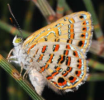 An estimated one to three species of insects and other native invertebrates are becoming extinct in Australia every week, according to a new study revealing the immense scale of the nation’s biodiversity loss.
An estimated one to three species of insects and other native invertebrates are becoming extinct in Australia every week, according to a new study revealing the immense scale of the nation’s biodiversity loss.  From The Orangutan Project: On Wednesday 9 November members of the Natural Resources Conservation Agency (BKSDA) in East Kalimantan rescued a tiny baby orangutan from East Kutai district in East Kalimantan. They handed the infant over to the Bornean Orangutan Rescue Alliance (BORA) so she could receive urgent medical care in the BORA Rescue and Rehabilitation Centre.
From The Orangutan Project: On Wednesday 9 November members of the Natural Resources Conservation Agency (BKSDA) in East Kalimantan rescued a tiny baby orangutan from East Kutai district in East Kalimantan. They handed the infant over to the Bornean Orangutan Rescue Alliance (BORA) so she could receive urgent medical care in the BORA Rescue and Rehabilitation Centre. Newly elected president of World Council of Non-Human Species addresses Humanity about the biodiversity crisis. Geoffrey the Giraffe also calls attention to plummeting number of giraffes. (Slava Abramovitch Unsplash)
Newly elected president of World Council of Non-Human Species addresses Humanity about the biodiversity crisis. Geoffrey the Giraffe also calls attention to plummeting number of giraffes. (Slava Abramovitch Unsplash)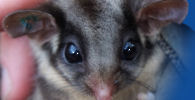 If you have ever been to the Department of Environment, Land, Water and Planning (DWELP) and asked questions, you would be well-aware that the native-animal department has almost no staff, that DWELP does not use the law to protect native animals, but prevents others from using it, due to legal lack of standing. At the same time, the Agriculture arm of DWELP enthusiastically issues permits to kill kangaroos and other native animals with almost no restriction or inspection, and quasi-imaginary
If you have ever been to the Department of Environment, Land, Water and Planning (DWELP) and asked questions, you would be well-aware that the native-animal department has almost no staff, that DWELP does not use the law to protect native animals, but prevents others from using it, due to legal lack of standing. At the same time, the Agriculture arm of DWELP enthusiastically issues permits to kill kangaroos and other native animals with almost no restriction or inspection, and quasi-imaginary  Australian Koala Foundation (AKF) is making a final plea to voters to realise that their political leaders and an incoming Government needs to support the Koala Protection Act, before it’s too late, as the Government’s recently released Koala Recovery Plan does not go far enough!
Australian Koala Foundation (AKF) is making a final plea to voters to realise that their political leaders and an incoming Government needs to support the Koala Protection Act, before it’s too late, as the Government’s recently released Koala Recovery Plan does not go far enough! It has been great to re-live the Apollo 11 Moon Landing’s 50 th Anniversary. What a monumental achievement and tribute to human intellectual candlepower, endeavour and above all courage. I was a Year 9 student at the time; like other classes we downed tools to watch it unfold. Our teachers were just as astonished by the audacity and precision of the Landing as we were. I – and I think most of the people who I talked with or heard from at that time – had a very rosy view of the future. Yes we were involved in a stupid war in Vietnam, but I thought the Second World War and the Holocaust were so wicked and so evil that we’d learned from that, and that there was a very strong worldwide appetite for peace. I thought that war and conflict would become a thing of the past.
It has been great to re-live the Apollo 11 Moon Landing’s 50 th Anniversary. What a monumental achievement and tribute to human intellectual candlepower, endeavour and above all courage. I was a Year 9 student at the time; like other classes we downed tools to watch it unfold. Our teachers were just as astonished by the audacity and precision of the Landing as we were. I – and I think most of the people who I talked with or heard from at that time – had a very rosy view of the future. Yes we were involved in a stupid war in Vietnam, but I thought the Second World War and the Holocaust were so wicked and so evil that we’d learned from that, and that there was a very strong worldwide appetite for peace. I thought that war and conflict would become a thing of the past.
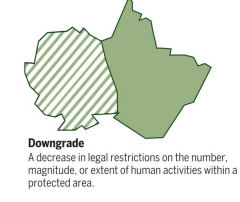 An
An 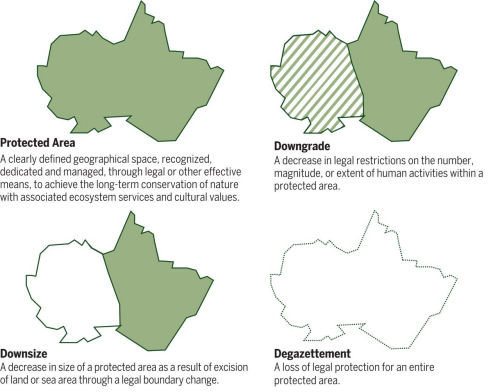
 We cannot let an internationally famous Australian icon become extinct in its natural habitat. South East Queensland has entered the final phase of the extinction of its biodiversity, with mega-developments gone mad and the loss of Koalas mounting as Koalageddon increases exponentially. Eastern Australia was a recognised international hotspot for biodiversity and unfortunately is now part of an internationally recognised de-forestation hotspot ! The only one in the "developed" world. How could this happen in Australia??? This is simply not acceptable to many people.
We cannot let an internationally famous Australian icon become extinct in its natural habitat. South East Queensland has entered the final phase of the extinction of its biodiversity, with mega-developments gone mad and the loss of Koalas mounting as Koalageddon increases exponentially. Eastern Australia was a recognised international hotspot for biodiversity and unfortunately is now part of an internationally recognised de-forestation hotspot ! The only one in the "developed" world. How could this happen in Australia??? This is simply not acceptable to many people. A plan to build a massive hydropower dam in Sumatra as part of China’s immense Belt and Road Initiative (BRI) threatens the habitat of the rarest ape in the world, which has only 800 remaining members. It is time for a clarion call for greater caution. While led by China, the BRI will also involve large financial commitments from
A plan to build a massive hydropower dam in Sumatra as part of China’s immense Belt and Road Initiative (BRI) threatens the habitat of the rarest ape in the world, which has only 800 remaining members. It is time for a clarion call for greater caution. While led by China, the BRI will also involve large financial commitments from 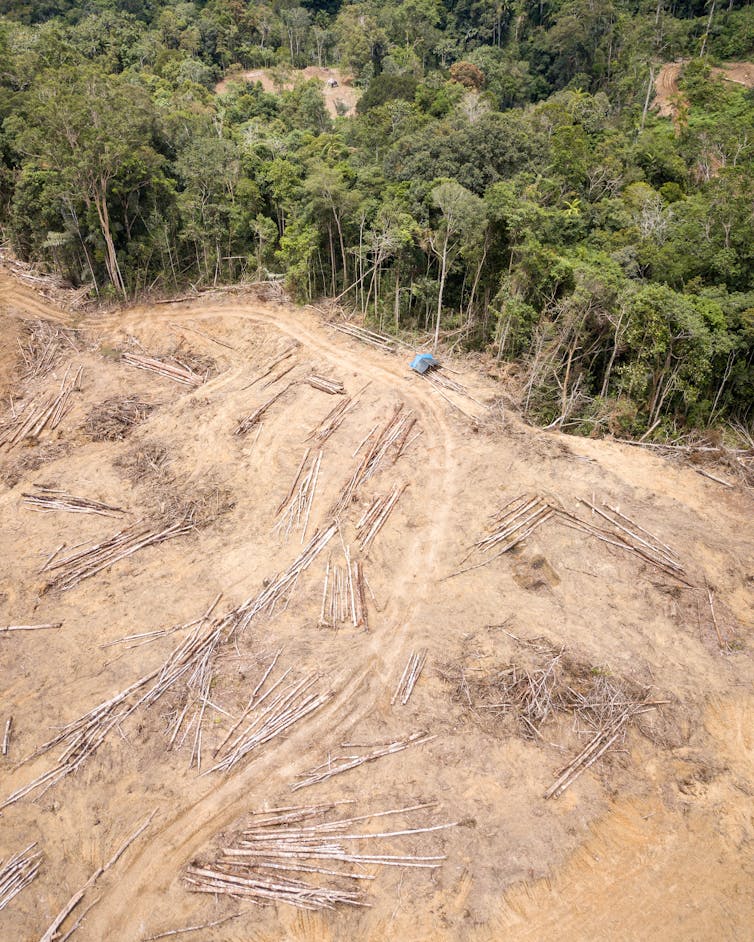
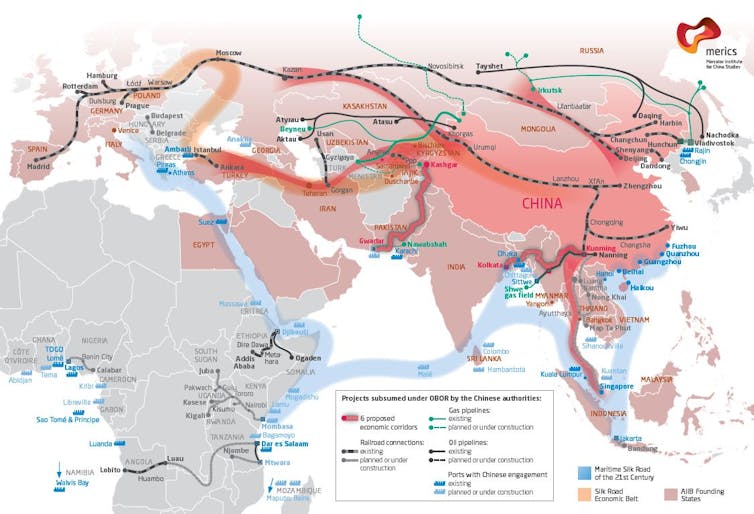
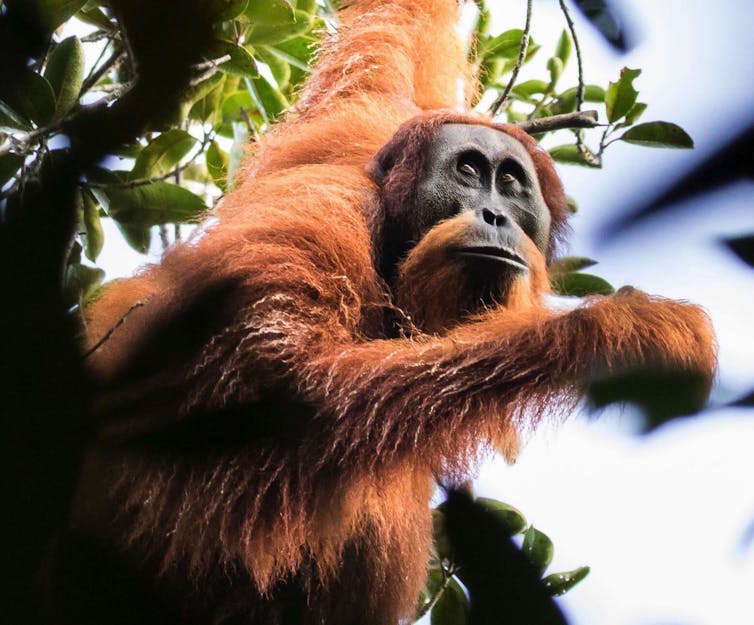
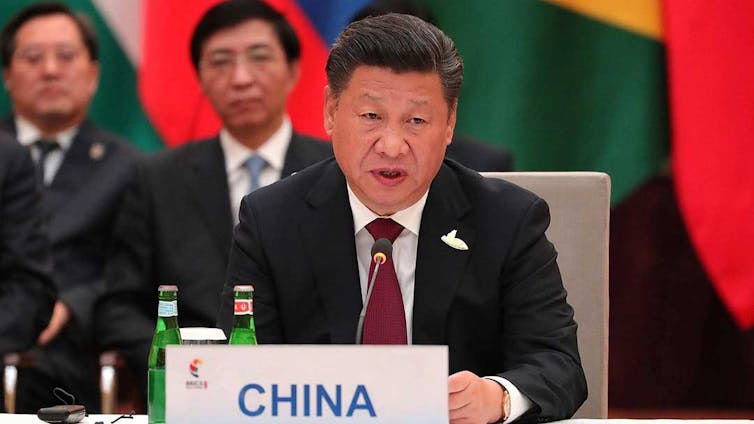
 Greensbush Association is screening the new international film about Kangaroos in Australia at 5.30pm May 25th at Main Ridge Community Hall, Main Creek Road, Main Ridge, (Mornington Peninsular) Victoria. This film has been screened and reviewed widely around the world to stunned reviews and I have not found any negative ones. It is not so well known in Australia, of course, because it challenges what governments and corporate press have to say about kangaroos. The Association screening this film is named after Greensbush Mornington Peninsular National Park, which is one of few places where kangaroos might now dwell in comparative safety, were it not for people on neighboring properties who treat them like pests and the Victorian Department of Environment, Land, Water and Planning which encourages this redneck approach to wildlife. Victorians will be concerned to hear that this film tells how the West Australian Commercial Kangaroo Meat industry is running out of kangaroos and planning to open up in Victoria. Of course the grubby Victorian Government is looking for any excuse to get rid of our wildlife. Turn up to this film-screening and maybe you can network with fellow wildlife warriors. The kangaroos need all the help they can get. If you doubt this, check the film out. Donations to cover the cost of the film and venue hire. All welcome! Map to venue at end of article. You can hire this film, host a screening, from kangaroothemovie.com.
Greensbush Association is screening the new international film about Kangaroos in Australia at 5.30pm May 25th at Main Ridge Community Hall, Main Creek Road, Main Ridge, (Mornington Peninsular) Victoria. This film has been screened and reviewed widely around the world to stunned reviews and I have not found any negative ones. It is not so well known in Australia, of course, because it challenges what governments and corporate press have to say about kangaroos. The Association screening this film is named after Greensbush Mornington Peninsular National Park, which is one of few places where kangaroos might now dwell in comparative safety, were it not for people on neighboring properties who treat them like pests and the Victorian Department of Environment, Land, Water and Planning which encourages this redneck approach to wildlife. Victorians will be concerned to hear that this film tells how the West Australian Commercial Kangaroo Meat industry is running out of kangaroos and planning to open up in Victoria. Of course the grubby Victorian Government is looking for any excuse to get rid of our wildlife. Turn up to this film-screening and maybe you can network with fellow wildlife warriors. The kangaroos need all the help they can get. If you doubt this, check the film out. Donations to cover the cost of the film and venue hire. All welcome! Map to venue at end of article. You can hire this film, host a screening, from kangaroothemovie.com.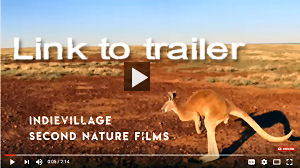
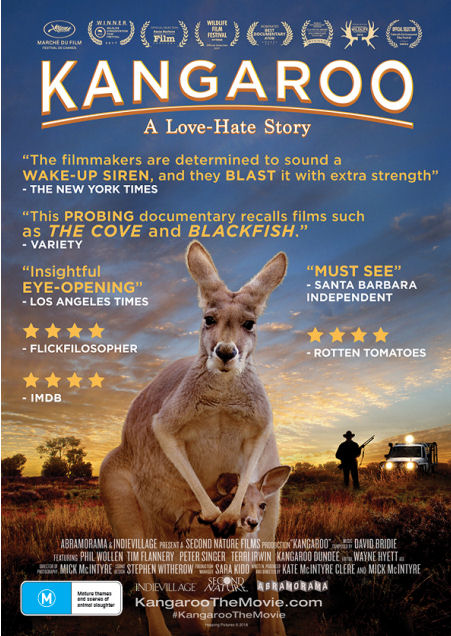
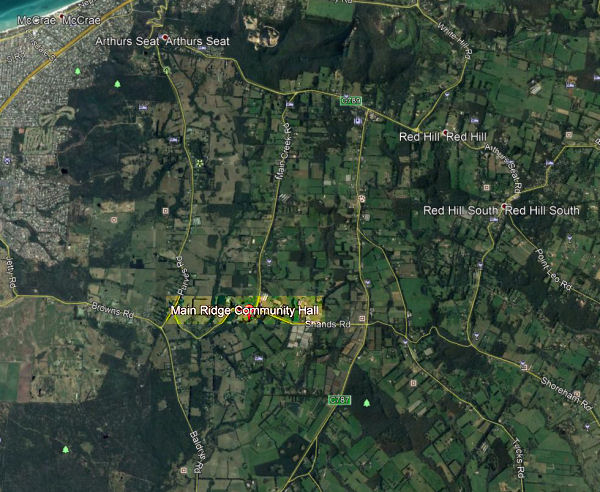
 Researchers from Museums Victoria and the University of Melbourne have CT scanned all 13 known Tasmanian tiger joey specimens to create 3D digital models which have allowed them to study their skeletons and internal organs, and reconstruct their growth and development. This has revealed important new information about how this unique extinct marsupial evolved to look so similar to the dingo, despite being very distantly related.
Researchers from Museums Victoria and the University of Melbourne have CT scanned all 13 known Tasmanian tiger joey specimens to create 3D digital models which have allowed them to study their skeletons and internal organs, and reconstruct their growth and development. This has revealed important new information about how this unique extinct marsupial evolved to look so similar to the dingo, despite being very distantly related.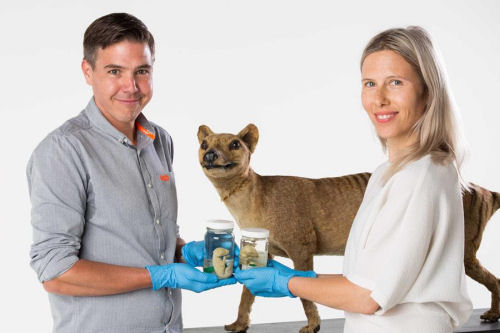 The digital scans show that when first born the Tasmanian tiger or thylacine (Thylacinus cynocephalus) looked like any other marsupial.
The digital scans show that when first born the Tasmanian tiger or thylacine (Thylacinus cynocephalus) looked like any other marsupial.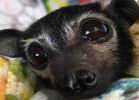 Wildlife rescuer and carer, Rebecca Koller, has observed an unprecedented number of Spectacled flying fox casualties in a traditional breeding site located near a new hotel construction in Cairnes. The spectacled flying fox is a threatened species.[1] Despite many attempts to get the Australian government to investigate and or intervene, the government has failed to get back to her. This is even though the problem has received extensive publicity and the species is about to have its threatened status upgraded from vulnerable to endangered. The source of this article is correspondence between Ms Koller and The Australian Wildlife Protection Council.
Wildlife rescuer and carer, Rebecca Koller, has observed an unprecedented number of Spectacled flying fox casualties in a traditional breeding site located near a new hotel construction in Cairnes. The spectacled flying fox is a threatened species.[1] Despite many attempts to get the Australian government to investigate and or intervene, the government has failed to get back to her. This is even though the problem has received extensive publicity and the species is about to have its threatened status upgraded from vulnerable to endangered. The source of this article is correspondence between Ms Koller and The Australian Wildlife Protection Council.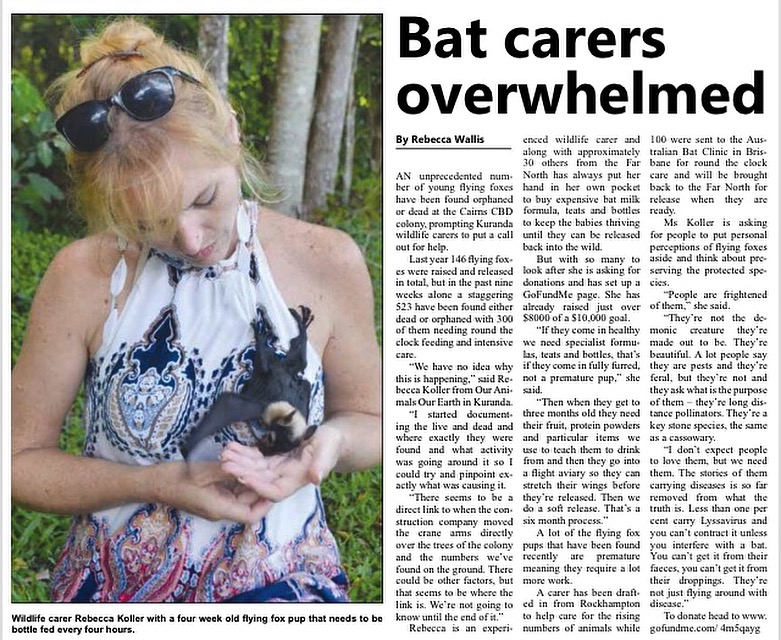
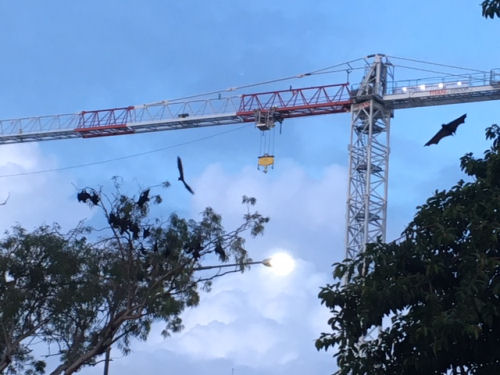
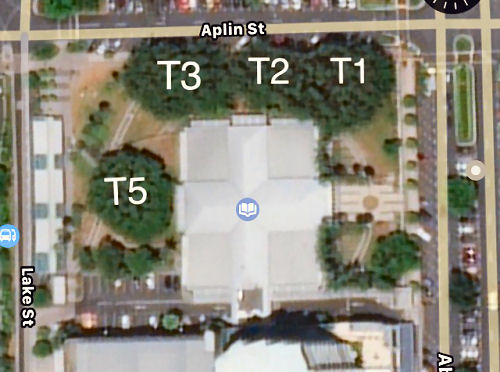
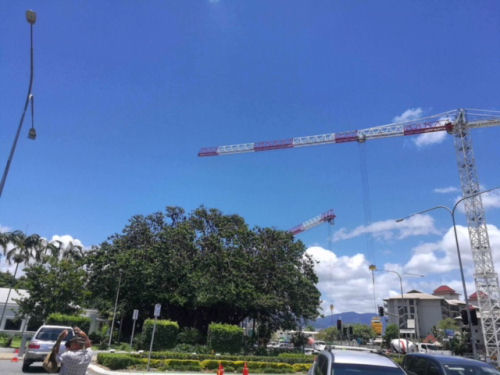

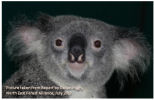
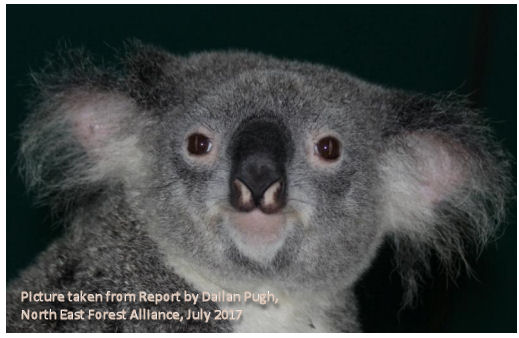

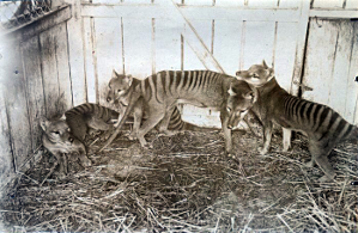
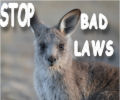 The Australian Wildlife Protection Council (AWPC) is gravely concerned by the ‘use and commercialisation of Australian native animals’, their extinction rates, cruelty inflicted on them, and recreational hunting. Even more so, given that Australia has the world’s highest extinction rate. Instead of apologising for crimes against nature, the Victorian State Government seeks to extend further exploitation.
The Australian Wildlife Protection Council (AWPC) is gravely concerned by the ‘use and commercialisation of Australian native animals’, their extinction rates, cruelty inflicted on them, and recreational hunting. Even more so, given that Australia has the world’s highest extinction rate. Instead of apologising for crimes against nature, the Victorian State Government seeks to extend further exploitation. 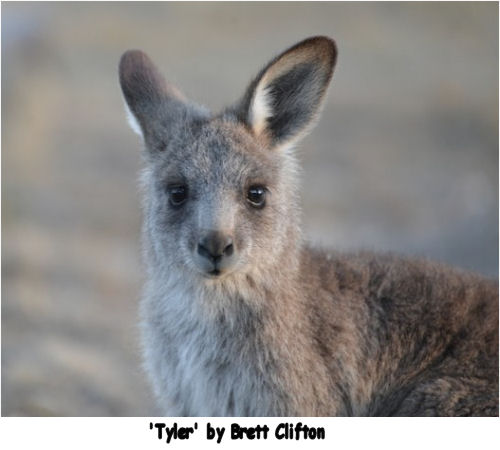
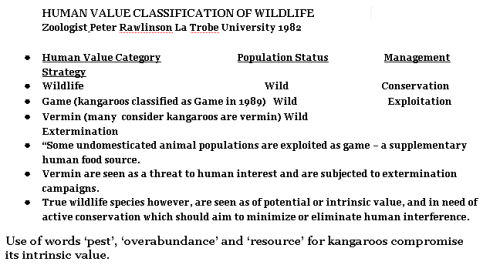
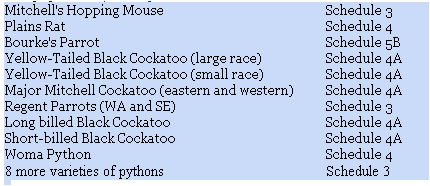
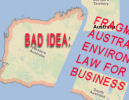 This Friday, 7 December, the Federal Government plans to give away environmental assessment authority to the states. Candobetter readers should take any opportunity they can to avoid this devolution of our already semi-toothless legislation. Here is an opportunity to add your signature to a petition. There is also a Get-up campaign. Readers are invited to let us know of any other actions they are taking.Links to petitions etc inside.
This Friday, 7 December, the Federal Government plans to give away environmental assessment authority to the states. Candobetter readers should take any opportunity they can to avoid this devolution of our already semi-toothless legislation. Here is an opportunity to add your signature to a petition. There is also a Get-up campaign. Readers are invited to let us know of any other actions they are taking.Links to petitions etc inside.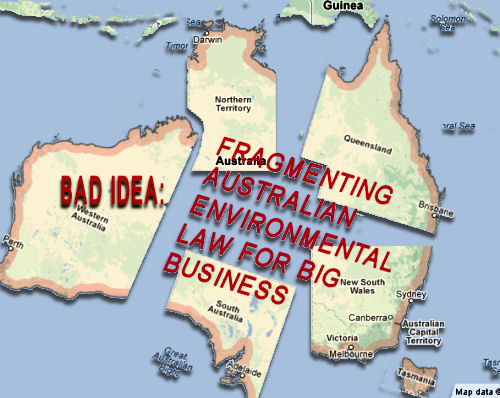
 PROTEST TODAY (Now!) 11 AM St Kilda Beach, behind Luna Park. See:
PROTEST TODAY (Now!) 11 AM St Kilda Beach, behind Luna Park. See: 

 Save the tiger and save man's self-respect. I mean, if we can't save the tiger we aren't much good for anything are we? Cronulla Beach to Barrenjoey Lighthouse Tiger Trek starts Saturday 10th March. The Trekking Tiger is a man in a tiger mask - his identity is unimportant. His main purpose is to draw attention to this vital campaign which recognizes the tiger, a flagship species in the biodiversity crisis. The trekker will be barefoot or wearing thongs in sympathy with the poverty that accompanies human populations that encroach on tiger territory.
Save the tiger and save man's self-respect. I mean, if we can't save the tiger we aren't much good for anything are we? Cronulla Beach to Barrenjoey Lighthouse Tiger Trek starts Saturday 10th March. The Trekking Tiger is a man in a tiger mask - his identity is unimportant. His main purpose is to draw attention to this vital campaign which recognizes the tiger, a flagship species in the biodiversity crisis. The trekker will be barefoot or wearing thongs in sympathy with the poverty that accompanies human populations that encroach on tiger territory.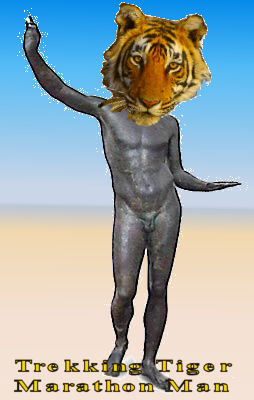
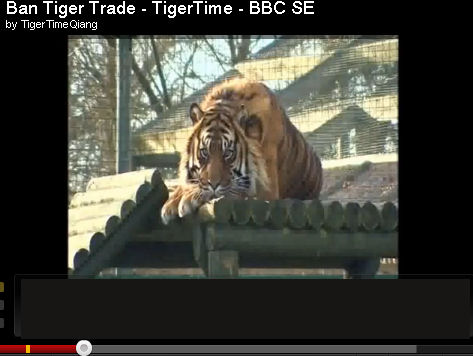

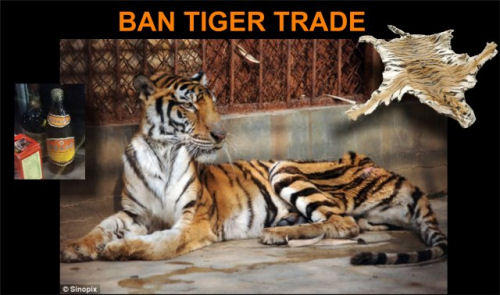
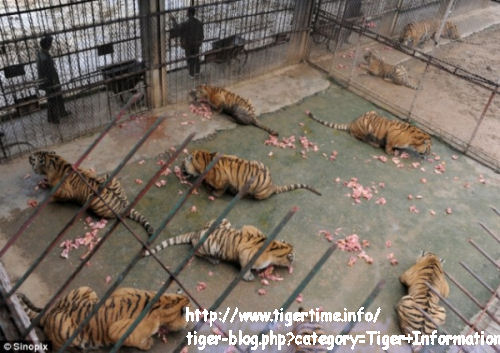
 On the northern coast of N.S.W. adjoining the Gold Coast and S.E.Queensland lies Tweed Shire, christened as the Green Caldera by once Environment Minister Peter Garrett. This area is famous for one of the highest biodiversity levels in Australia and infamous for the greatest level of biodiversity loss in N.S.W. thanks to the fact that the vast majority of Tweed councillors are pro-development. But in the case of Kings Forest, a massive housing development for 15,000 people worth $2 billion, NSW State Planning took control under the massively unpopular Part 3a legislation, depriving the council of all controls.
On the northern coast of N.S.W. adjoining the Gold Coast and S.E.Queensland lies Tweed Shire, christened as the Green Caldera by once Environment Minister Peter Garrett. This area is famous for one of the highest biodiversity levels in Australia and infamous for the greatest level of biodiversity loss in N.S.W. thanks to the fact that the vast majority of Tweed councillors are pro-development. But in the case of Kings Forest, a massive housing development for 15,000 people worth $2 billion, NSW State Planning took control under the massively unpopular Part 3a legislation, depriving the council of all controls.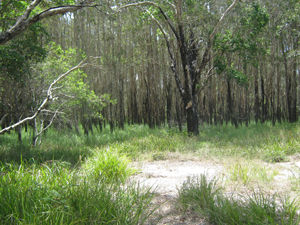 (photo: Cudgen Nature Reserve)
(photo: Cudgen Nature Reserve)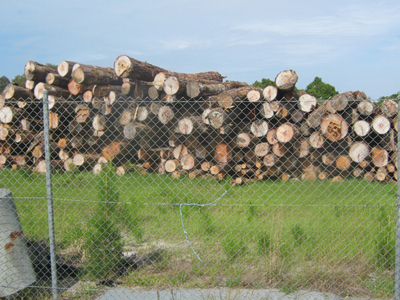
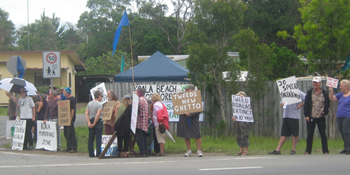
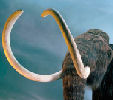 I am not, by nature, a conspiracy theorist. As Carl Sagan said, extraordinary claims require extraordinary proof. But when people of my ilk consistently see our interviews, op-eds, and lecture invitations abruptly cancelled with feeble excuses given---if given at all---then random events suddenly take on a pattern. If we examine it, I think only one conclusion emerges as most plausible. We have been witnessing a slow strangulation of debate about overpopuation. It represents a mass die-off of open discussion of arguably the most important topic of our time by those upon whom our society most depends. Our scientists.
I am not, by nature, a conspiracy theorist. As Carl Sagan said, extraordinary claims require extraordinary proof. But when people of my ilk consistently see our interviews, op-eds, and lecture invitations abruptly cancelled with feeble excuses given---if given at all---then random events suddenly take on a pattern. If we examine it, I think only one conclusion emerges as most plausible. We have been witnessing a slow strangulation of debate about overpopuation. It represents a mass die-off of open discussion of arguably the most important topic of our time by those upon whom our society most depends. Our scientists.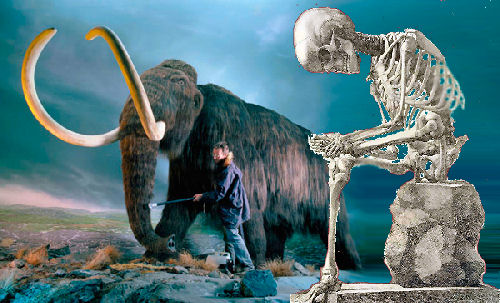
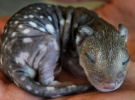 Victorian government plans to drop 1080 poison bait from an aircraft into forests could result in the extinction of the already critically endangered Spot-tailed quoll. The purpose of this antiquated and vandalistic method is to poison wild dogs.
Victorian government plans to drop 1080 poison bait from an aircraft into forests could result in the extinction of the already critically endangered Spot-tailed quoll. The purpose of this antiquated and vandalistic method is to poison wild dogs.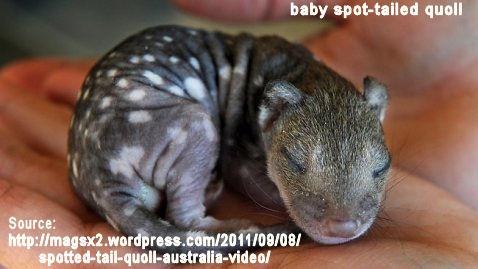
 Something very shonky is going on in Canberra with unjustified massacre of kangaroos. As the previous blog mentioned, no science to back it up.
Something very shonky is going on in Canberra with unjustified massacre of kangaroos. As the previous blog mentioned, no science to back it up.
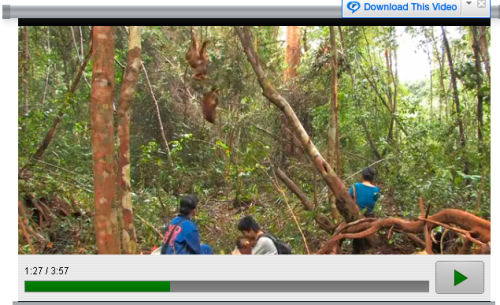
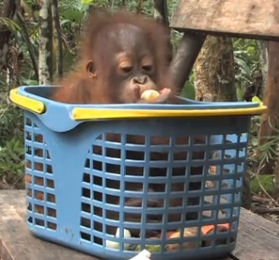
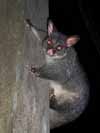 Five weeks passed and no reply. The officer was at the DECCW lecture I described above so I said hello and he apologised for not answering, explaining that he passed my email around to other officers for comment. Apparently they nixed the idea of rope overpasses for koalas claiming they didn't work. I pointed out that they do work for possums and other animals however. His comment "Ah but possums aren't a threatened species."
Five weeks passed and no reply. The officer was at the DECCW lecture I described above so I said hello and he apologised for not answering, explaining that he passed my email around to other officers for comment. Apparently they nixed the idea of rope overpasses for koalas claiming they didn't work. I pointed out that they do work for possums and other animals however. His comment "Ah but possums aren't a threatened species."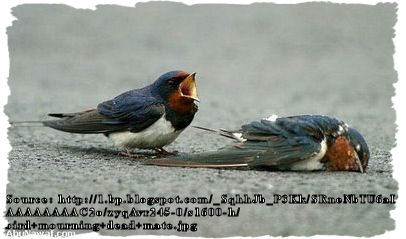
Recent comments